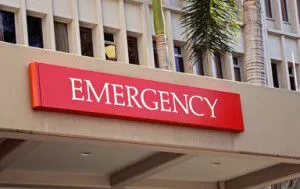In 2011, about 1.24 million U.S. emergency room visits were related to the recreational use of pharmaceuticals, including prescription and over-the-counter drugs. The number of younger adults using some of these drugs for non-medical reasons is growing at a staggering rate.
The Substance Abuse and Mental Health Services Administration (SAMHSA) recently released a report showing that the number of emergency room visits by adults aged 18 to 34, specifically related to non-medical use of central nervous system (CNS) stimulants, was up a whopping 300 percent between 2005 and 2011.
Among the CNS stimulant drugs included in this report were benzphetamine, modafinil and some drugs used to treat attention deficit/hyperactivity disorder (ADHD). Non-pharmaceutical ‘street’ stimulants, including methamphetamine, were not studied. Approximately 30 percent of the emergency room visits reported by this study also involved alcohol.
The abuse of CNS stimulant drugs has been linked to cardiovascular problems, as well as to addiction. In combination with alcohol, the risks of alcohol poisoning and injury due to intoxication are increased.
SAMHSA Chief Medical Officer Elinore F. McCance-Katz states, “these CNS stimulants can potentially cause significant and lasting harm… we must raise awareness of this public health risk and do everything possible to prevent it.”
There is a huge spectrum of reasons why people choose to abuse drugs, and these vary greatly depending on the individual in question. Could one reason for the dramatic growth of the use of stimulants in particular have something to do with health habits?
A stimulant is designed to make you feel ‘up’ – in mood, energy level, and physical and mental performance. A desire to recreationally ingest a stimulant points to some lack; a ‘down’ feeling or state that is being compensated for by the drug. So, what is making so many younger adults feel like they need an ‘up,’ especially a dangerous, artificial ‘up’?

While this is certainly not the whole story, these lifestyle choices, especially in combination, could be significant contributors. It would be interesting to see how many people involved in these stimulant-related emergency room visits ate whole, organic foods, exercised regularly and spent some time in the sun each day.
With obesity, diet-related illnesses and early dementia on the rise, along with the pharmaceutical abuse epidemic, there must be some connection.
-The Alternative Daily
Sources:
http://www.newswise.com/articles/view/606311/?sc=dwtn
http://www.publichealthjrnl.com/article/S0033-3506%2812%2900467-2/abstract
